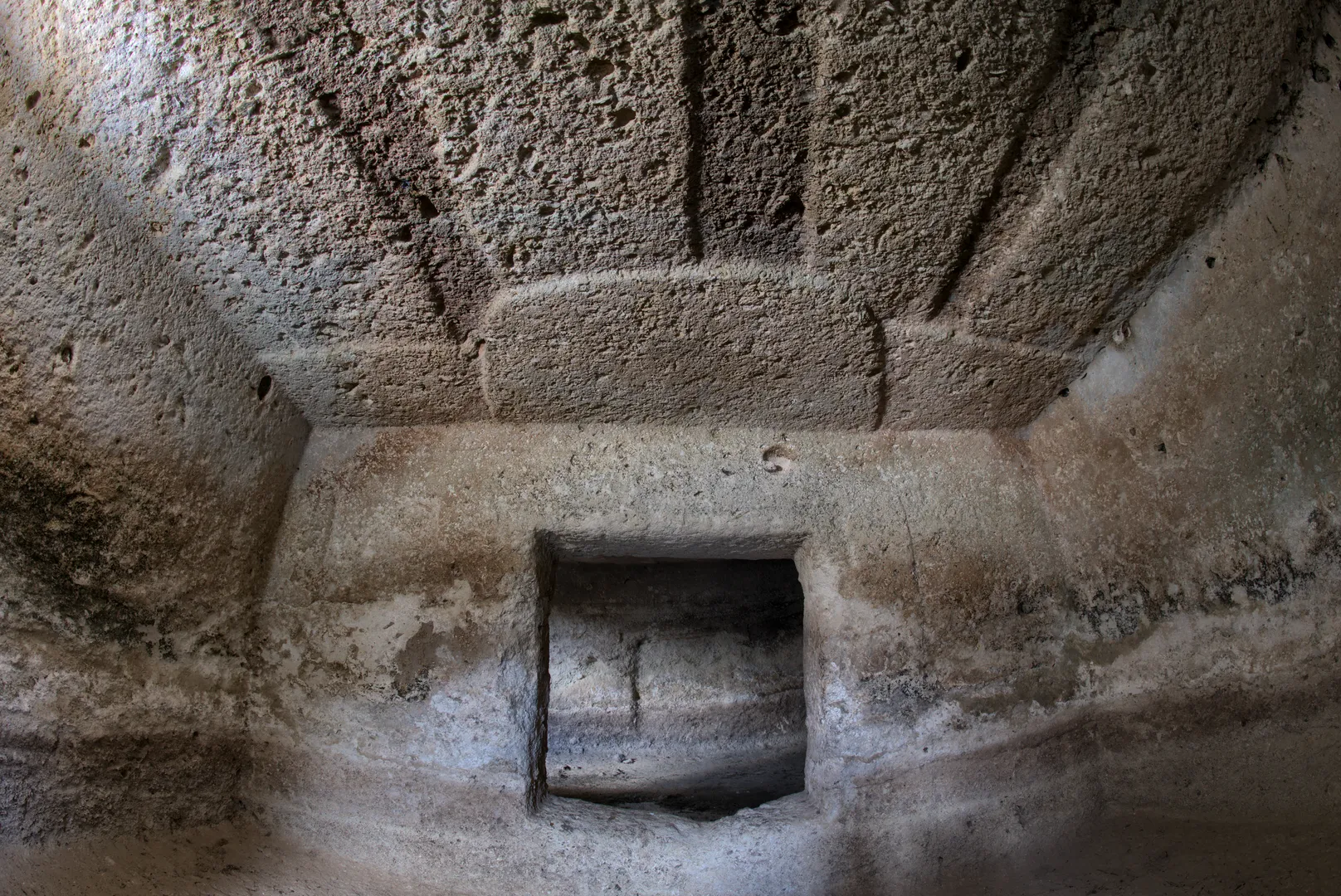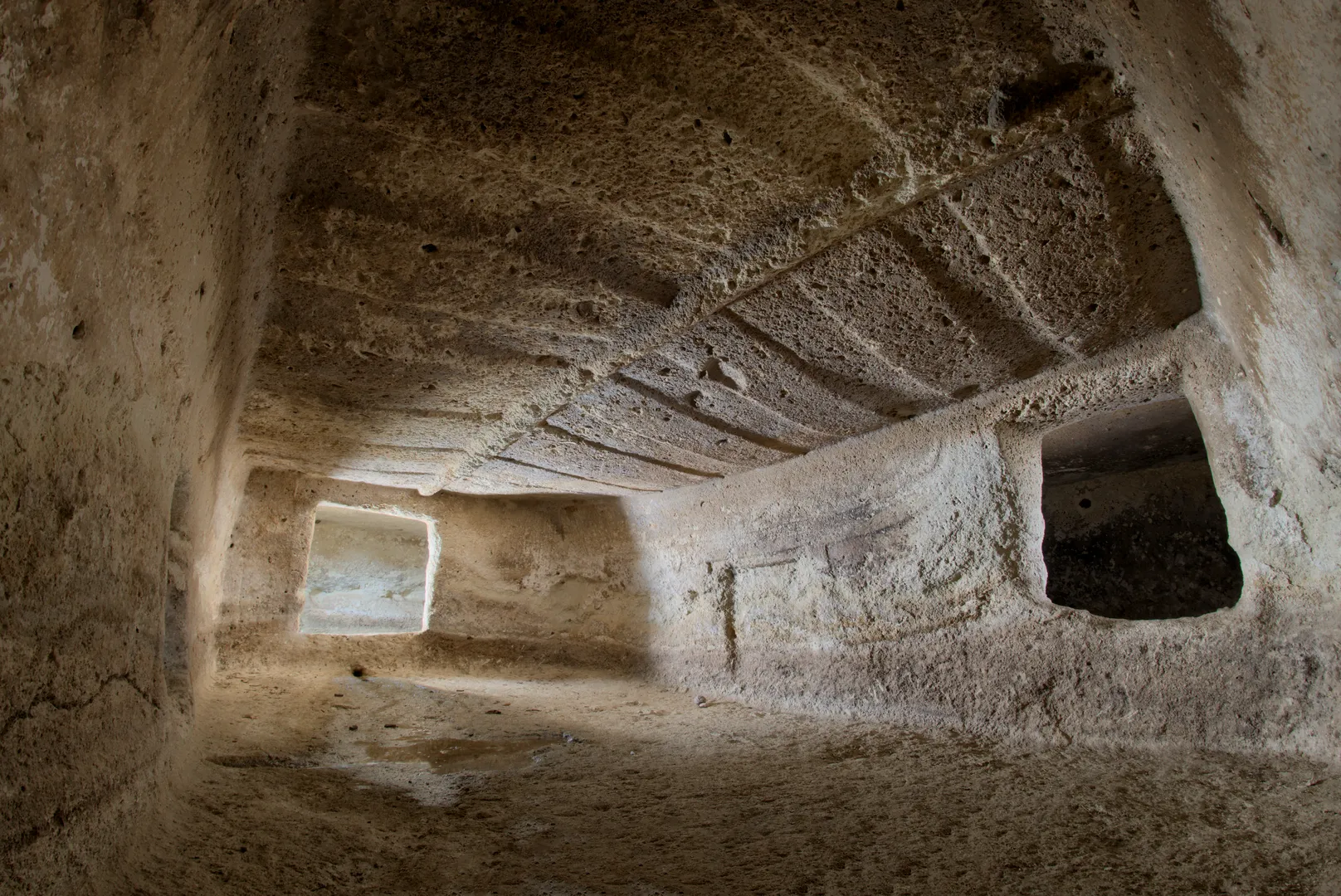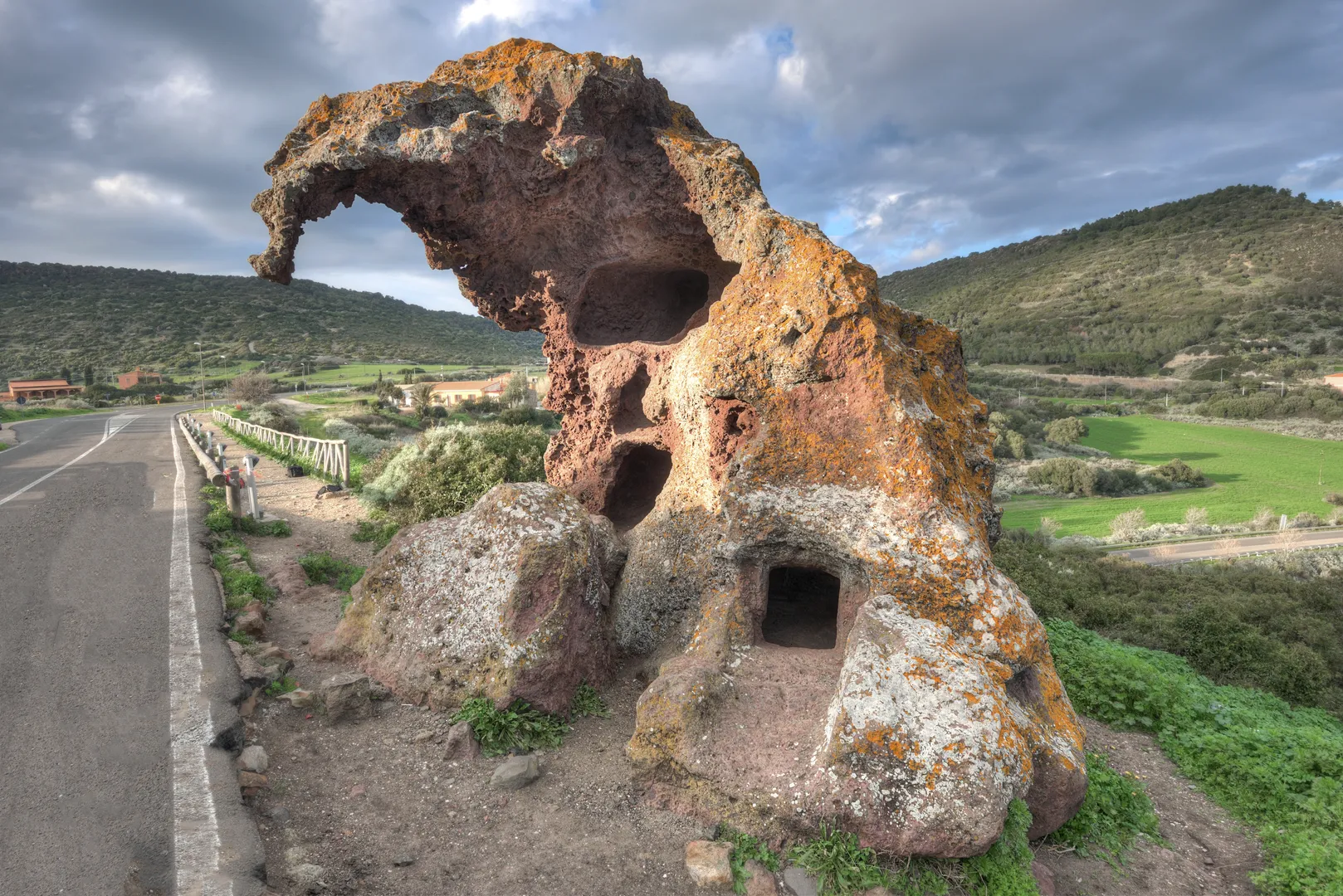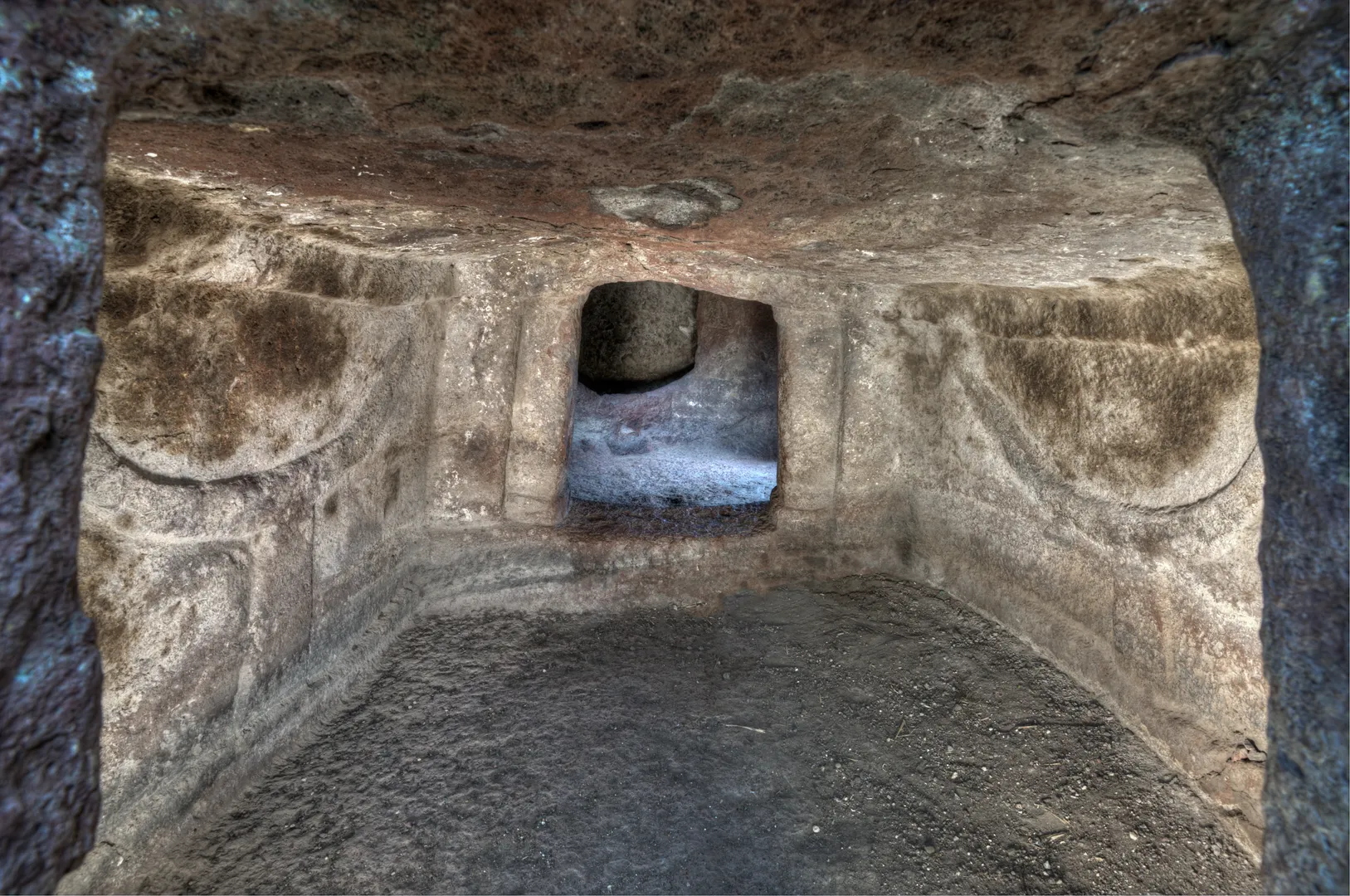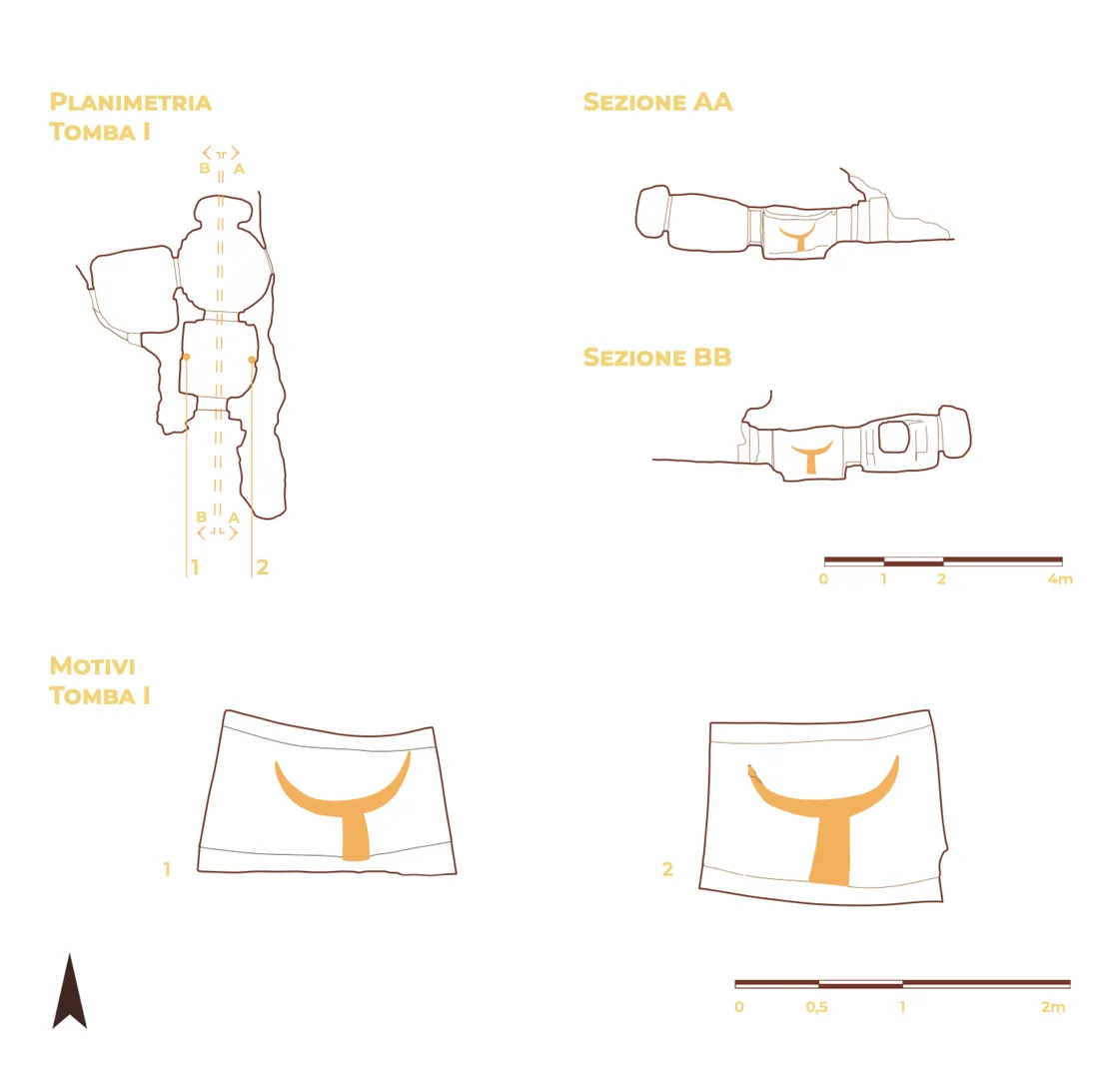Domus de Janas of Roccia dell'Elefante
Famous for its natural shape resembling an elephant, the rock hosts two domus de janas carved into the volcanic stone.
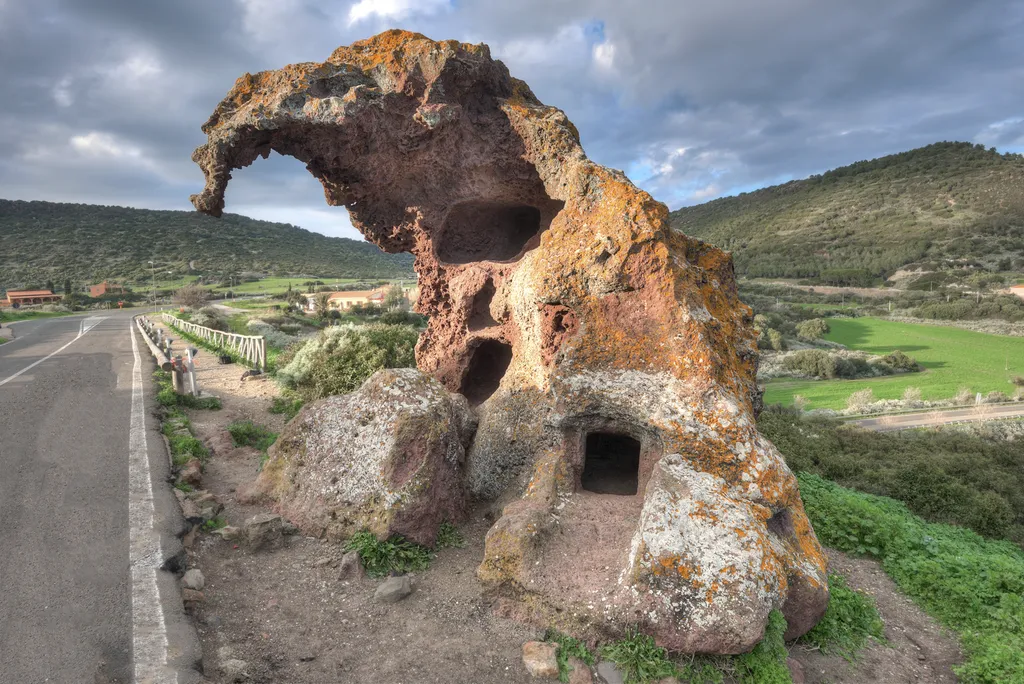
Domus de Janas of Roccia dell'Elefante
Domus de Janas of Roccia dell'Elefante
Contact
Access information
From Castelsardo, exit onto the SS134 towards Sedini; after passing the Multeddu district and leaving the Provincial junction for Santa Teresa di Gallura, after about 150 m, on the left side of the road, is located the boulder that houses the domus de janas.
Roccia dell’Elefante was excavated on a block of volcanic rock, about 4 meters high, that used to be part of the rocky complex of Monte Castellazzu, from which it detached sliding halfway down a slope. Over the millennia, weathering has given it the peculiar shape to which it owes its name. The original name is Pedra pertunta, meaning “perforated stone”. It is the most significant example of domus de janas dug on erratic boulders.
In 1887, Domenico Lovisato reported the complex that was first investigated by Giuseppa Tanda (1977).
Both tombs were excavated inside it at two different times: the most ancient one (Tomb II), on the upper level of the boulder, has almost disappeared due to the degradation of the rock and the excavation of the hypogeum, as confirmed by the petrographic and 3D modeling investigations conducted by the Universities of Cagliari and Florence.
Although Tomb I has been trespassed for some time and no excavation data have been made available, it is of fundamental importance from both a scientific and a monumental point of view, due to the presence of symbolic motifs of considerable interest carved in relief (bucrania, architectural elements). Tomb II has almost completely disappeared: only the remains of two rooms arranged along the NW-SE orthogonal axis are visible.
The location of the domus de janas having a considerable dominance over the surrounding territory and wide visibility of the tomb itself, suggests the choice was intended to deeply characterize the ritual landscape. Tombs dug on erratic boulders, often having wide visibility and landscape view, are not very common in Sardinia, but they are relatively frequent in this part of Anglona. The morphology of the erratic boulder where the tombs are excavated is exceptional and resembles the shape of an elephant, a real natural monument.
Another domus de janas dug into an erratic boulder can be found just 500 m in a straight line, included in the buffer zone: the Tomb of Scala Coperta, featuring a sort of deep vestibule followed by a small quadrangular hallway chamber, surrounded by three chambers arranged in a T-shaped scheme.
Tomb I
A dromos (a) of about one meter in length leads to the entrance, becoming wider to accommodate the double frame of the door. The quadrangular hatch leads to an antechamber (b): a quadrangular room (1.37x1.40 m, height 0.83 m) richly decorated with carved reliefs on the walls.
On the walls of the chamber, two horn-shaped motifs are found, both falling in the Type IV Tanda (2021) category. They consist of naturalistic crescent-shaped horns carved on top of a stylized bull head, rendered with a simple trapezoidal relief. A low plinth rests at the foot of the walls while a thin band on top of it runs just below the ceiling. On the sides of the door between the antechamber and the adjacent quadrangular room (c), the jambs are decorated with false plinths and abaci. The compartment is a sub-circular chamber (1.30 x 1.48 m, height 0.90 m) featuring a raised niche in the northern wall, and another larger chamber in the western wall. The small cubicle or raised niche (d), the panel of which was clearly enlarged, has a slightly elliptical layout and curved walls and ceiling. The hatch communicating with chamber e, in the west side, features the same relief plinth-and-abacus motif of the lesenes, currently barely visible. The hatch led to a quadrangular room (1.40x1.50 m, height 0.85 m), currently open on the southern side and partly lacking its roof as a result of rock degradation.
Bibliography
- Melis P. 1991, La domus dell'Elefante, Sardegna archeologica, Guide e itinerari, 15.
- Melis P. 2023, La domus de janas della Roccia dell'Elefante, Castlasardo (SS), in G. Tanda, L. Doro, L. Usai, F. Buffoni (eds.), Arte e architettura nella Sardegna preistorica. Le domus de janas (candidatura unesco 2021), Cagliari: 136-139.
